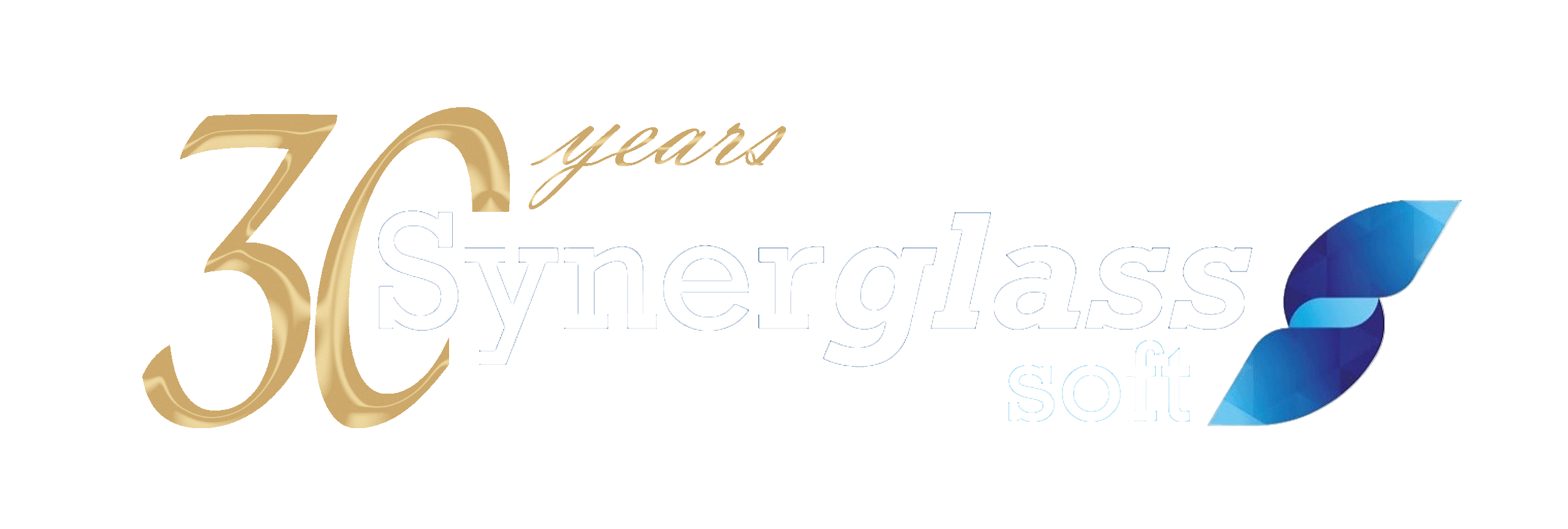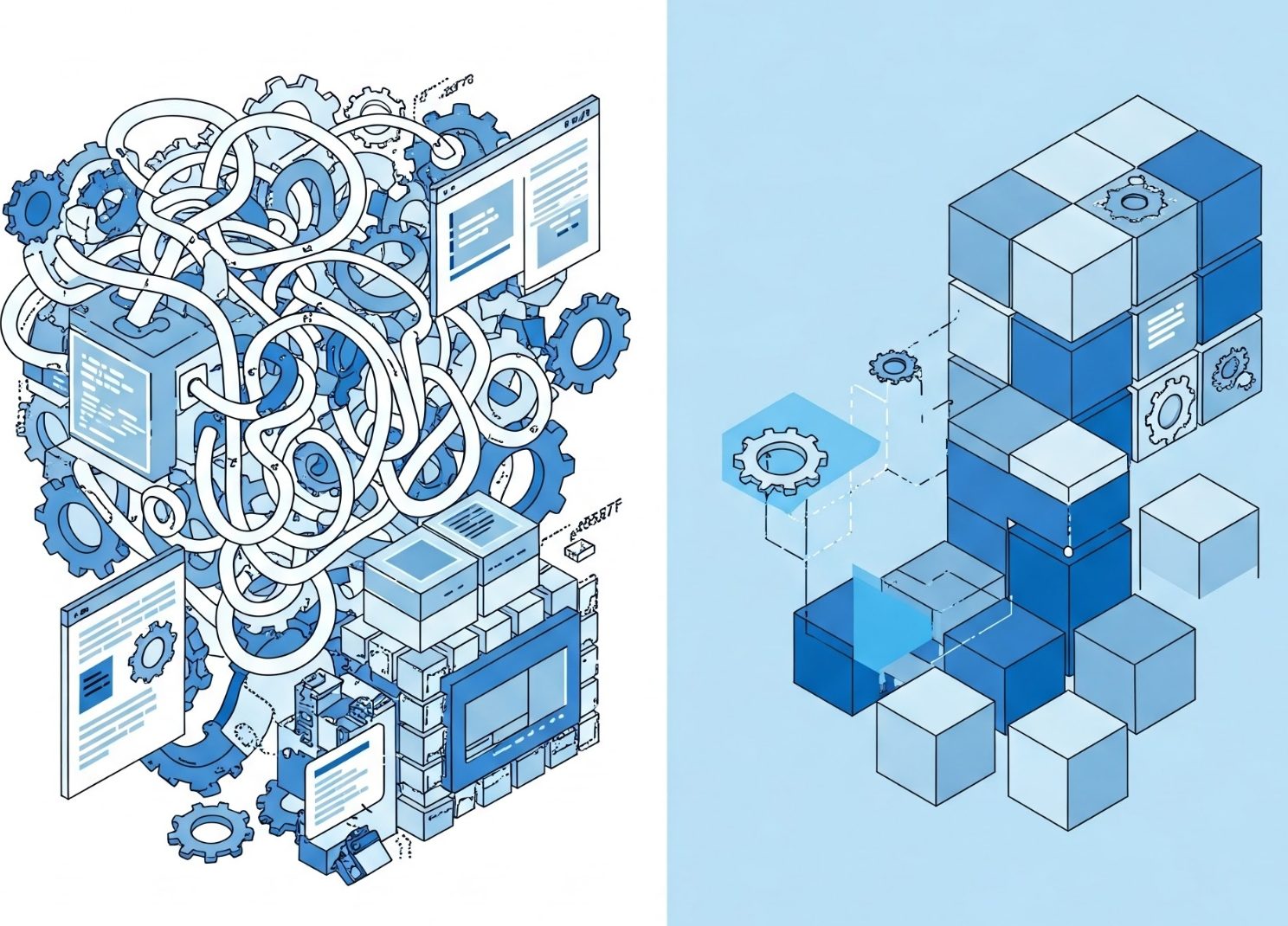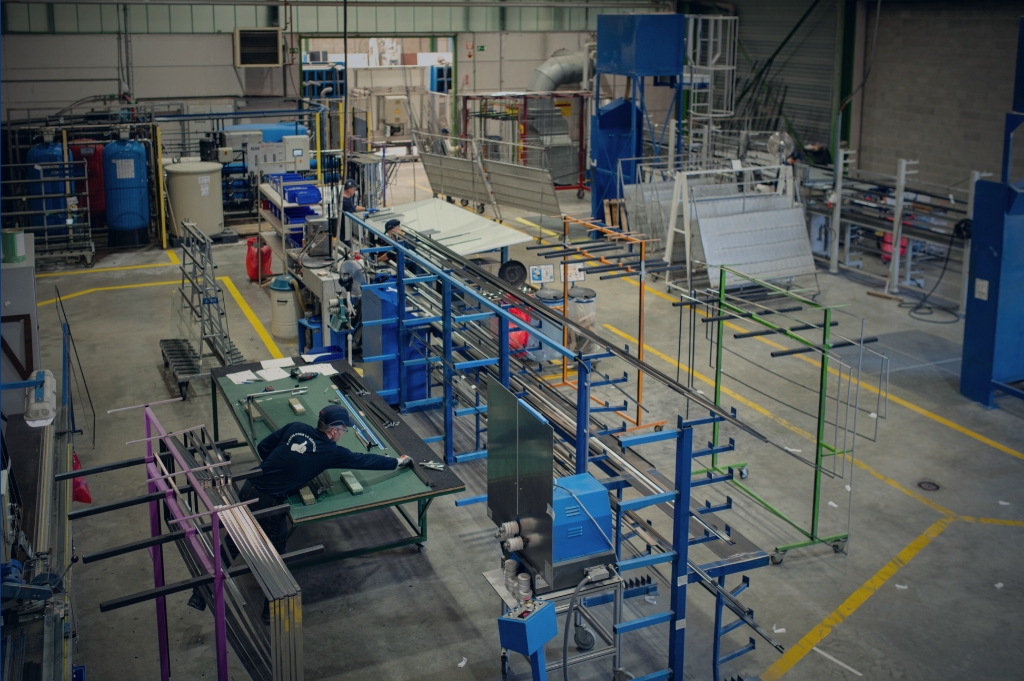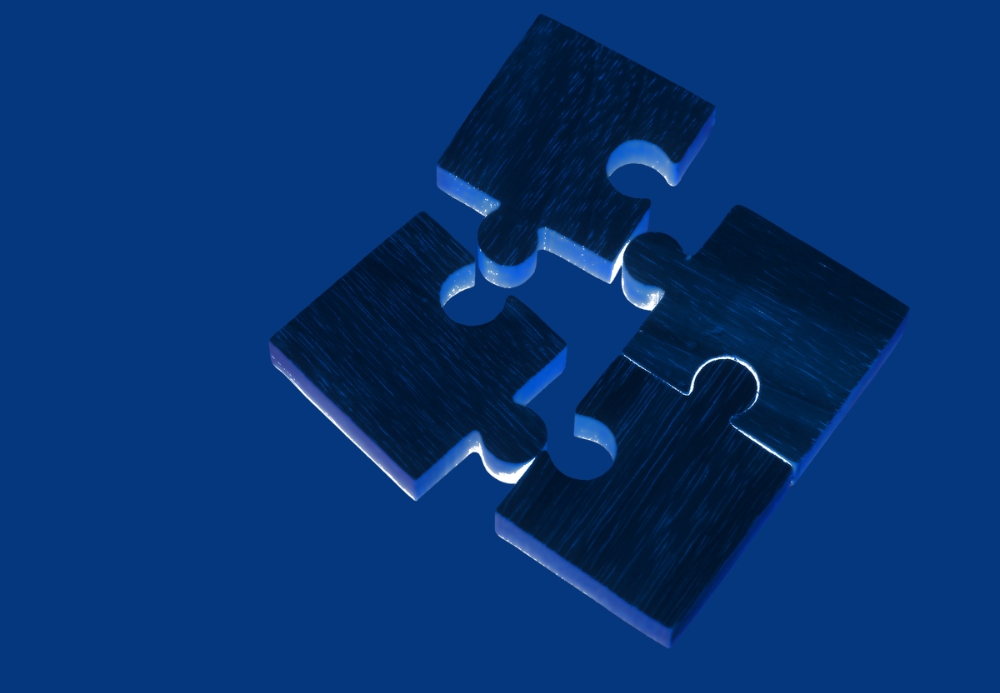Managing delivery racks in industries like glass processing is a persistent challenge. Whether it’s lost assets, production delays due to insufficient delivery equipments, or frustration of constantly chasing down customers to retrieve your assets, these issues cost businesses valuable time and money. For many, the constant worry of running out of racks when they are needed most feels overwhelming.
As the project manager for Synertracker at Synerglass-Soft, Karine has helped businesses transform their operations. By implementing effective tracking solutions, her team has enabled businesses to retrieve hundreds of assets that were lost, reclaiming hundreds of euros and hours annually. With years of experience, she’s worked alongside teams to streamline processes and bring clarity where chaos once reigned. It’s a challenge worth solving – and he’s here to guide you through it.
This article provides a comprehensive comparison of the most effective delivery rack tracking solutions, including their pros and cons. By the end, you’ll have the knowledge and confidence to choose the best one for your unique needs, the one that saves time, money, and headaches.
Who Needs a Delivery Rack Tracking Solution?
If you’re reading this, you’re probably in the business of manufacturing or distributing products that require the use of delivery assets. With industries such as glass processing grappling with lost racks and production delays, it’s no surprise that the asset tracking market is expected to increase from $53.29 million in 2022 to $148.83 million by 2030 (Data Bridge Market Research).
This growth signals an urgent need for effective solutions that can address these persistent challenges. If you recognize any of the following issues in your own operations, you’re not alone:
- Lost or misplaced racks: Customers often leave delivery assets at their own customer’s sites, causing massive losses year after year.
- Production delays: Without enough racks, production stops, deliveries are delayed, and customers may start losing trust, leading them to consider other suppliers.
- Hiring extra staff: To keep track of racks, you may have to hire a full-time person to call customers and track down missing racks.
These problems are not just inconvenient; they cost you money, slow down production, and harm customer relationships. Finding the right tracking solution can be the key to reducing these headaches and improving your bottom line.
As you can see, these challenges are common to businesses across the industry. But here’s the good news: there are solutions tailored to tackle them.
What Should You Expect from a Delivery Asset Tracking Solution?
An effective tracking solution should offer:
- Real-time visibility: You should always know the location of your racks, regardless of where they are in the supply chain.
- Operational efficiency: The system should reduce manual labor and time spent tracking down assets, enabling more productive use of your workforce.
- Cost savings: The solution should help you reduce rack loss and unnecessary replacements, ultimately saving money in the long run.
- Scalability: As your business grows, your tracking solution should be able to scale, handling increasing volumes of racks and more complex logistics.
- Ease of use: It should be user-friendly for both your team and customers, minimizing training time and friction.
Now that we know what to expect from a good tracking system, let’s dive into the various solutions available in the market.
The Honest Comparison: Delivery Assets Tracking Solutions
1. Manual Tracking: Why It Fails in Modern Logistics
This is the traditional, low-tech approach to tracking delivery racks, where you manually reach out to customers to retrieve rack information.
- Hardware: None.
- Software: Basic communication tools like email, spreadsheets, or note-taking applications.
Pros:
- No upfront costs: Since there’s no hardware or software investment, it’s a low-risk option.
- Familiar tools: Most businesses already use email and spreadsheets, so there’s no need for additional training or setup.
Cons:
- Extremely time-consuming: Reaching out to customers individually takes time and effort. As your customer base grows, this becomes increasingly inefficient.
- Prone to human error: Manual tracking is susceptible to mistakes such as missed communications or incorrect data entries.
- Inefficient for scaling: As you add more racks and customers, manual tracking becomes increasingly unmanageable, especially for businesses that deal with high volumes.
Best for:
- Small businesses with a limited number of racks and customers. For larger operations, manual tracking is simply not viable due to its inefficiencies.
2. GPS Systems: Real-Time Precision
GPS tracking allows you to attach GPS devices to racks to get precise, real-time location updates. This system works well for tracking assets across large distances and in complex delivery routes.
- Hardware: GPS trackers affixed to racks.
- Software: A mapping platform for live tracking of assets.
Pros:
- Real-time tracking: You can see the exact location of each rack, which helps improve logistics and reduce the chances of racks being misplaced.
- Security: GPS systems help deter theft and loss, as you can trace the path of stolen or unreturned racks.
- Efficiency: GPS trackers provide real-time location data, aiding decision-making and helping reduce delays and fuel costs.
Cons:
- High upfront cost: GPS trackers are typically more expensive to purchase, and each rack will need a dedicated tracker. For large fleets, this can represent a significant initial investment.
- Maintenance: GPS devices require regular maintenance and battery replacements, which adds to ongoing operational costs.
- Limited indoor use: GPS tracking is less effective indoors or in areas with weak satellite signals, like warehouses. Additionally, in certain countries, different SIM cards may be required, complicating management. GPS trackers are also at risk of theft due to their size and visibility.
Best for:
- Large businesses with fleets of delivery vehicles and complex logistical needs. Companies that deal with long-distance shipping or high-value racks will benefit from the precision and security GPS offers.
3. Bluetooth Tracking: Proximity-Based Solutions
Bluetooth beacon technology uses low-energy Bluetooth signals to track racks within a limited proximity. This solution is most useful when the racks stay within a particular geographic area.
- Hardware: Bluetooth beacons attached to racks, with Bluetooth receivers installed in vehicles or warehouse locations.
- Software: A mobile or cloud-based application that detects and displays racks within Bluetooth signal range.
Pros:
- Cost-effective: Bluetooth beacons are generally cheaper than GPS or RFID solutions, making it an affordable option for small to mid-sized businesses.
- Easy installation: Setting up Bluetooth-based tracking is simple and doesn’t require specialized expertise.
- Proximity-focused: Ideal for tracking racks within a concentrated area (e.g., within a factory or a specific delivery zone).
Cons:
- Limited range: Bluetooth has a relatively short range (30 to 100 meters), meaning it can only track racks when they are in close proximity to receivers.
- Infrastructure requirements: To ensure full coverage, you may need a dense network of Bluetooth receivers, especially if you manage large areas or multiple facilities.
- Lower accuracy: While it can detect the presence of racks, it doesn’t offer the same level of precise location tracking that GPS can provide.
Best for:
- Smaller businesses with geographically concentrated operations or facilities, such as industrial plants or regional delivery routes. Bluetooth offers an affordable solution for these scenarios.
4. Barcode Scanning Systems: Collaborative Tools (e.g., SynerTracker)
This solution relies on QR codes or barcodes attached to racks, which can be scanned by smartphones or tablets. It’s a collaborative, cloud-based platform for tracking racks in a shared ecosystem.
- Hardware: QR codes attached to racks.
- Software: A cloud-based platform like SynerTracker that collects and centralizes scan data for tracking rack history and location.
Pros:
- Low initial costs: QR code tracking requires minimal hardware investment, making it an affordable solution. When paired with GPS trackers (as mentioned in point 2), it creates a hybrid system offering both cost-effective asset management and real-time geolocation for a comprehensive tracking solution.
- Collaborative: Customers or staff can scan and update the status of racks themselves, promoting real-time data entry and reducing the need for manual follow-ups.
- Mobile compatibility: Most businesses already have smartphones or tablets, so there’s no need to purchase new equipment.
Cons:
- Dependent on user participation: The system requires customers and employees to actively scan and update rack statuses, which can lead to gaps in tracking if not all users participate.
- No real-time tracking: Unlike GPS, QR code scanning doesn’t offer live location updates. It relies on the physical presence of the person scanning.
Best for:
- Businesses seeking an affordable, collaborative solution to track a moderate volume of racks. It’s ideal for operations where human collaboration and less frequent updates are acceptable.
5. RFID Systems: Automated Tools
RFID technology uses radio waves to automatically track racks as they pass through certain points. This solution is typically used in centralized operations like warehouses and distribution hubs.
- Hardware: RFID tags on racks and gantries or handheld readers.
- Software: Systems designed to log and process movement data for each rack.
Pros:
- Automation: RFID systems can automatically log when racks pass through specific checkpoints, reducing manual tracking efforts.
- Reliable: It’s a highly accurate system for tracking racks within a controlled environment, such as warehouses, and provides detailed movement history.
- Scalable: RFID systems can be scaled for larger operations and can track thousands of racks as they move in and out of defined zones.
Cons:
- High setup costs: The initial investment in RFID hardware (tags, readers, and gantries) can be significant.
- Limited tracking: RFID only tracks racks at designated points (e.g., at warehouse entry/exit), meaning it doesn’t offer real-time tracking of racks during transit.
Best for:
- Businesses with centralized hubs and predictable rack movements, such as distribution centers or large manufacturing plants. It’s a great option for companies that can afford the initial investment and need to automate asset management.
Each tracking method comes with its own set of advantages and limitations. Below, we’ll compare them so you can choose the best fit for your business.
Comparison table: pros, cons, and best-use cases for each tracking solution
| Solution | Pros | Cons | Best for |
|---|---|---|---|
| Manual tracking | No upfront cost, familiar tools | Time-consuming, prone to errors, inefficient for scaling | Small glass processing businesses with limited resources, racks and customers |
| GPS systems | Real-time tracking, secure, efficient route planning | High upfront cost, maintenance, limited indoor use | Large glass processing businesses with long-distance shipping and complex logistics |
| Bluetooth | Cost-effective, easy to install, proximity-based | Limited range, requires dense infrastructure | Regional glass manufacturers or distributors with geographically concentrated operations |
| Barcode scanning app | Low cost, mobile-friendly, easily scalable | No real-time tracking, dependent on user participation | Moderate-volume glass operations where staff and customers can collaborate on updates |
| RFID gantries | Automated, scalable, reliable in controlled areas | High setup cost, limited tracking to designated points | Large manufacturing plants or distribution centers needing automation |
Choosing the Best Delivery Rack Tracking Solution for Your Needs
Lost delivery racks have long been a source of frustration and cost for businesses in the glass processing industry. With solutions like GPS, barcodes scanning, and RFID, managing these assets is more achievable than ever.
The goal is not just to track your racks but to streamline your operations and reduce the headaches that come with managing assets. Every lost rack isn’t just a logistical challenge – it’s lost revenue and strained customer relationships. And choosing the right system can transform your operations.
At Synerglass-Soft, we’ve helped businesses recover up to 90% of lost racks and save over thousands of euros annually in replacement costs. To learn more about how SynerTracker can transform your operations, visit our product page.
If you’re ready to find the best fit for your business, we’re here to help you navigate your options. Don’t let lost racks hold you back. Schedule a free demo of SynerTracker today and see how it can transform your operations, save costs, and simplify logistics.




